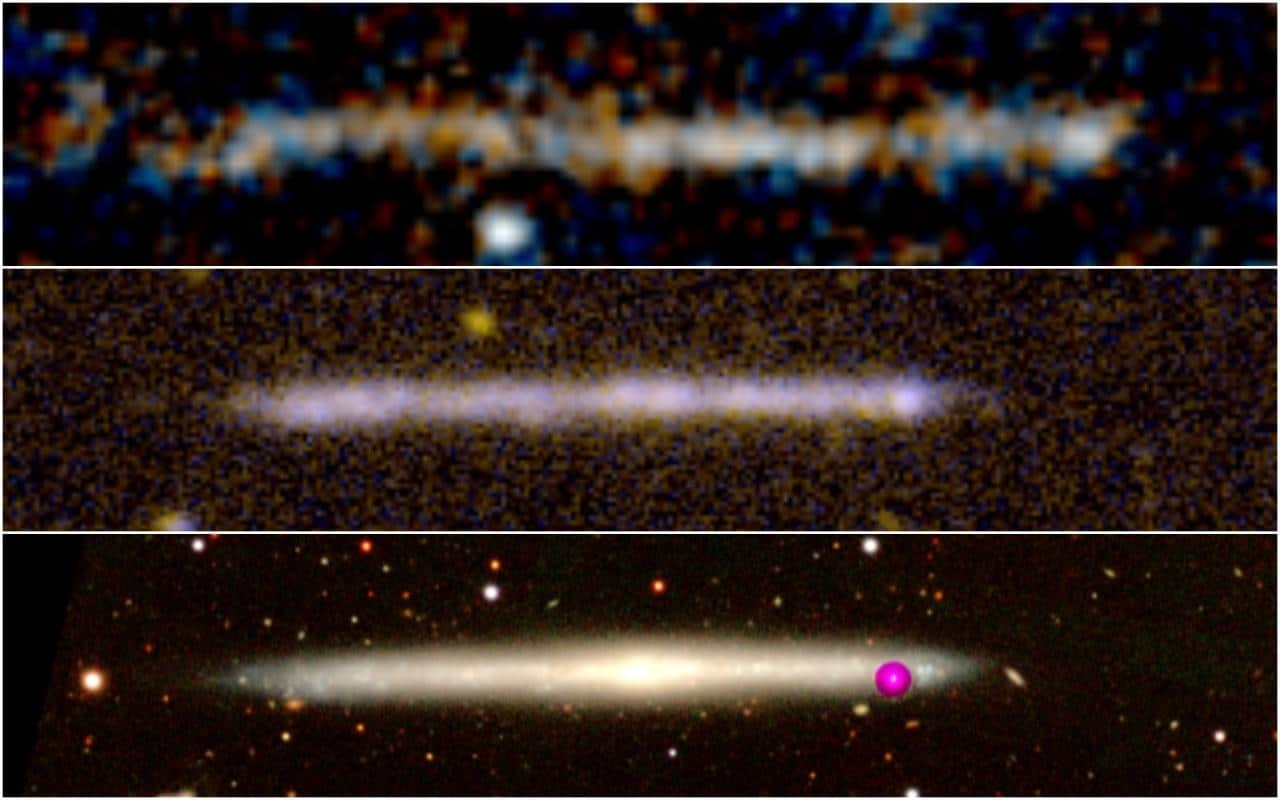A team of researchers from the Institute of Astronomy of the Canary Islands (IAC) has conducted a study that suggests that the very thin structure of stars recently discovered by the Hubble Space Telescope may be a galaxy that we just see from the outside.

The mysterious star trail baffled numerous research groups, which for a long time could not explain the nature of the object with an age of 8 billion years. Its size is comparable to the Milky Way, and the origin of this extremely long, narrow structure has been the subject of numerous theories.
The initial hypothesis explained the strange shape of the object as the result of the passage of a supermassive black hole through a huge cloud of gas. After that, the interest of the astronomical community in this concept was caused by the need to take into account a wide range of extremely complex, unique circumstances for such an object to form. In order to find less bizarre explanations for the observations, many research groups continued to consider new and diverse hypotheses.
Scientists from the Astrophysical Research Institute located in the Canary Islands, after studying the recent results of the study, concluded that the peculiar arrangement of stars could only be explained as a galaxy without a bulge, observed from the side. Such galaxies, often known as thin or flat galaxies, are fairly typical.
“The movement, size and number of stars correspond to what we have seen in other similar galaxies. It is a great relief that we have found a solution to this long-standing mystery. The new proposed scenario turned out to be much simpler. In some ways, this is also unfortunate; after all, this object turned out to be not the tailed black hole that we had hoped for,” IAC researcher Jorge Sanchez Almeida commented on the discovery.
Earlier we reported on how NASA created a creepy animation comparing the largest black holes in the Universe.
According to Astronomy & Astrophysics
Follow us on Twitter to get the most interesting space news in time
https://twitter.com/ust_magazine
